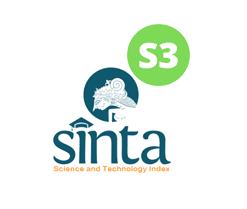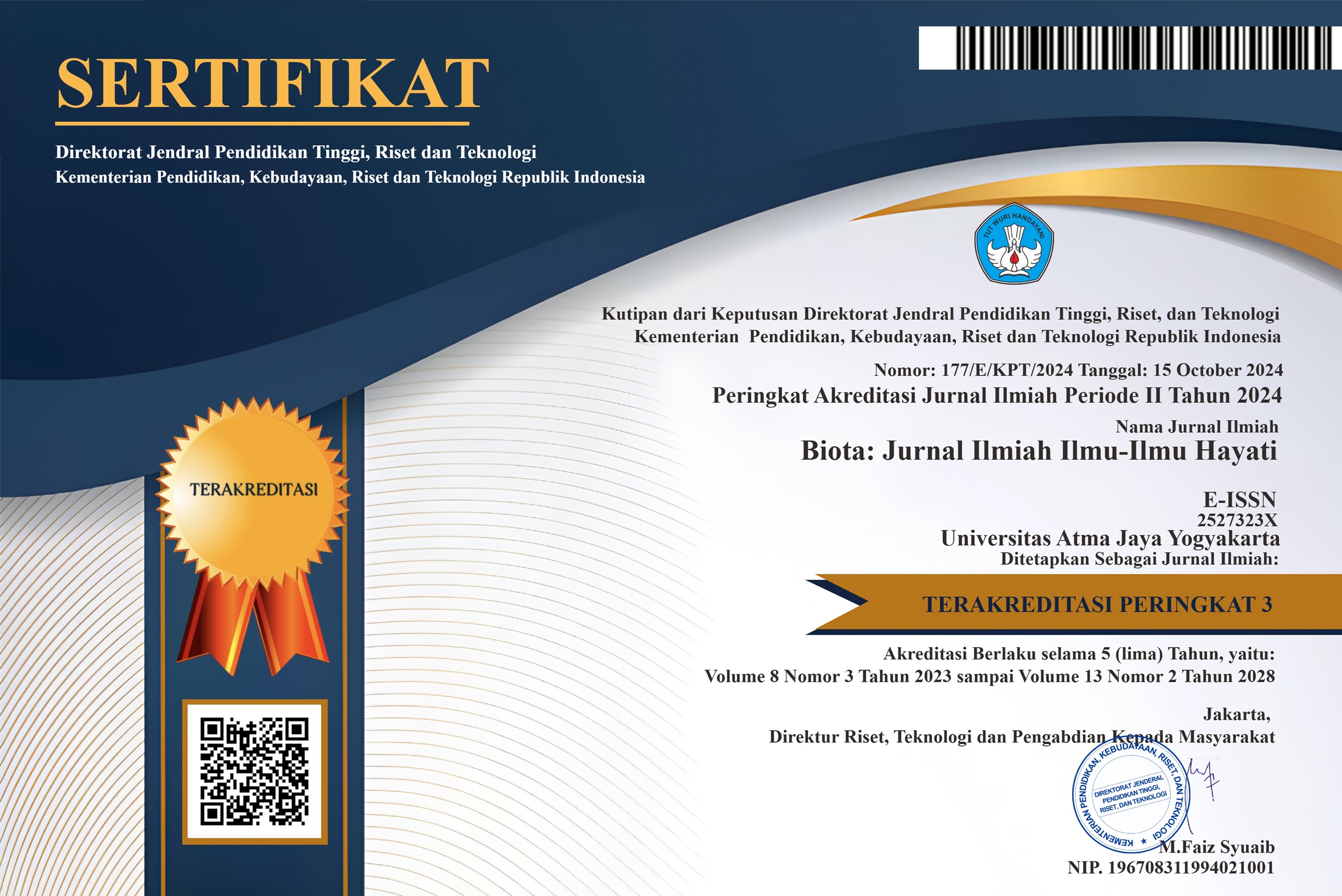Kepekaan Cacing Laut Ophryotrocha diadema (Polychaeta: Dorvilleidae) terhadap Cemaran Metil Merkuri (MeHg)
DOI:
https://doi.org/10.24002/biota.v15i3.2594Keywords:
Polychaeta, Ophryotrocha, methyl mercury, reproduction, larval developmentAbstract
Susceptibility of the marine polychaete Ophryotrocha diadema (Polychaeta: Dorvilleidae) towards the neurotoxic methyl mercury (MeHg) contamination was studied in an experimental chamber, which was aimed to assess and compare the susceptibility level of the organism based on its generations (F0, F1, F2, and F3). Seven variables of growth and reproduction aspects were applied as indicators in this study; they were: 1) individual growth, 2) first time the egg laid, 3) number of eggs per individu, 4) number of eggs per egg mass, 5) number of eggs to larva per egg mass, 6) number of mortality per egg mass, and 7) reproductive potential. Observation was conducted on the treatment (MeHg in concentration of 0,00025 ppb) and the control (no MeHg) to each of the generations (F0, F1, F2, and F3). Data obtained were analysed for average and standard deviation. Comparison of susceptibility within the generations was calculated using the variable of reproductive potential. The results showed that there were differences between the treatments and the control for all of the variables. Comparison on the susceptibility of the polychaete within the generations to MeHg contamination was F0<F1=F3<F2. It was concluded that the F2 generation had the highest susceptibility among the others.Downloads
Published
15-10-2019
How to Cite
Lasut, M. T., & Pangkey, H. (2019). Kepekaan Cacing Laut Ophryotrocha diadema (Polychaeta: Dorvilleidae) terhadap Cemaran Metil Merkuri (MeHg). Biota : Jurnal Ilmiah Ilmu-Ilmu Hayati, 15(3), 385–391. https://doi.org/10.24002/biota.v15i3.2594
Issue
Section
Articles
License
Authors who publish with Biota : Jurnal Ilmiah Ilmu-Ilmu Hayati agree to the following terms:
- Authors retain copyright and grant the Biota : Jurnal Ilmiah Ilmu-Ilmu Hayati right of first publication. Licensed under a Creative Commons Attribution-NonCommercial 4.0 International License that allows others to share the work with an acknowledgment of the work's authorship and initial publication in this journal.
- Authors are able to enter into separate, additional contractual arrangements for the non-exclusive distribution of the journal's published version of the work (e.g., post it to an institutional repository or publish it in a book), with an acknowledgment of its initial publication in Biota : Jurnal Ilmiah Ilmu-Ilmu Hayati, and as long as Author is not used for commercial purposes.












